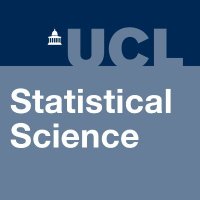
Daniel Alexander
@fishpiechicken
Professor of Computer Science. interests in computational modelling, machine learning, medical imaging, data analysis.
ID: 1140618926000185344
17-06-2019 13:55:18
93 Tweet
672 Followers
78 Following






New paper in Imaging Neuroscience The MIT Press @mitpress.bsky.social by @WijDr Peter Wijeratne, Daniel Alexander Daniel Alexander, et al: The temporal event-based model: Learning event timelines in progressive diseases direct.mit.edu/imag/article/d…



1/ 🚨🚨 New paper alert 🚨🚨 Introducing RETFound, a foundation model for ophthalmology We’re super excited about this and hope it will act as a #Cornerstone for global efforts to prevent blindness through #AI UCL Institute of Ophthalmology Moorfields Eye Hospital NHS Foundation Trust #OpenAccess nature nature.com/articles/s4158…

Excited and proud to be part of this. Looking forward to the next steps in the UCL CMIC and UCL Institute of Ophthalmology collaboration and crossover of NIHR UCLH Biomedical Research Centre NIHR Moorfields BRC BRCs.


New paper alert! rdcu.be/dvstu Our review paper on Data-Driven Disease Progression Modelling (D3PM) was published in Nature Rev Neurosci yesterday, co-led by myself, Alex Young, & Daniel Alexander at UCL Computer Science and UCL CMIC







Huge thanks to our coauthors Sara Garbarino, Nick Fox, Frederik Barkhof, Jonathan Schott, the paper reviewers, and our many wonderful colleagues working in the field!






